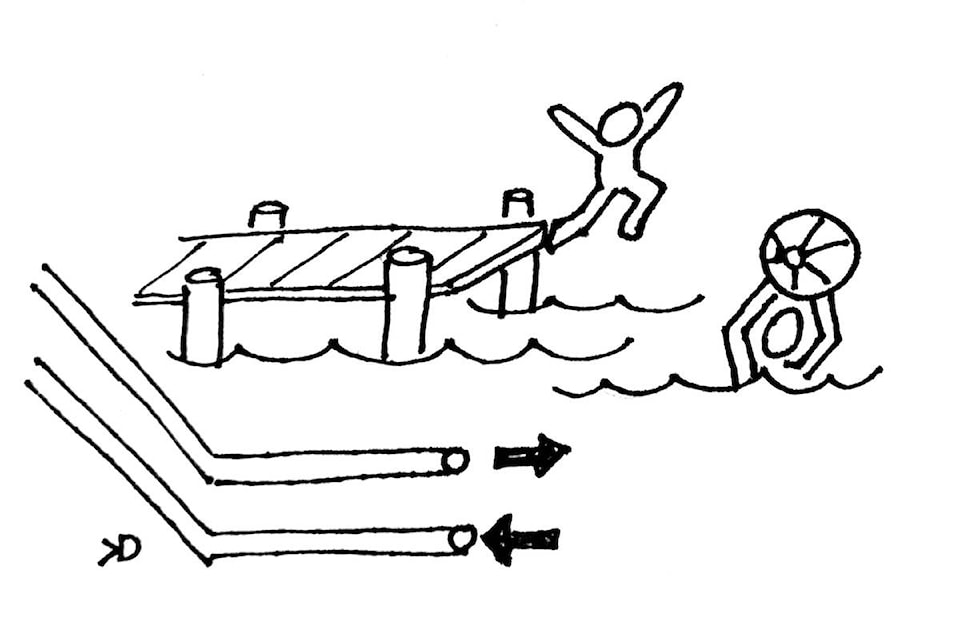Wouldn���߲��о����t it be great to get all of our lakeshore properties off natural gas or electricity for heating and cooling?
The original ���߲��о����One Block���߲��о���� concept wasn���߲��о����t for geoexchange but for solar photovoltaics: One Block Off The Grid (elegantly abbreviated 1BOG) was a company founded in 2008 in San Francisco. 1BOG was a solar company that arranged PV installations. They removed pain points: the trouble with installing any renewable energy system is overhead and upfront cost.
READ MORE:
Overhead in the industry is the difference between doing a hundred homes at once and one home at a time, over and over a hundred times. Solar installers love to get bulk orders and schedule jobs back-to-back and a large job allows the company to order panels in larger numbers at lower prices.
The 1BOG logo was initially called Plugman but turned into Bogman.
The upfront cost is the thousands of dollars a homeowner has to have available at the beginning of the installation (for solar photovoltaics or geoexchange systems). It is paid back over several years in lower energy bills (an investment comparable to the stock market) but many homeowners haven���߲��о����t saved the cash, or don���߲��о����t want to deplete their savings.
1BOG did two things: they rounded up all the families in an area who wanted to install solar, creating a bulk order and they arranged for low interest financing so that the upfront payment was $1000 rather than $13,000.
READ MORE:
Ironically, ���߲��о����One Block Off The Grid���߲��о���� didn���߲��о����t actually remove houses from the electrical grid. Why not? The electric grid functions as the greatest battery ever made. Batteries are heavy and expensive, although they get better every year. BC Hydro���߲��о����s net metering system allows you to bank energy when you make more than you need, and if your annual total is in your favor, once a year they pay you 9.99 cents per kilowatt for your extra contribution.
(This is good, but not great. You are paying them 10.799¢ per kWh and in some places in North America you would get market rate plus a ���߲��о����feed in tariff���߲��о���� which rewards you for installing renewable energy.)
READ MORE:
1BOG worked like a cross between Girl Guide cookies, Jehova���߲��о����s Witnesses and Avon. They recruited volunteers to go door-to-door in neighborhoods. They threw Renewable Energy Parties. And of course, being from California, they used Facebook. Once they had commitments from homeowners, they turned around and recruited solar installers to bid on the job and credit unions to provide low-interest financing. Their first trial in California put solar on 42 houses. They went on to operate 15 large US cities. Oddly enough, the Canadian-US brain drain operated backwards for 1BOG. They were purchased in 2012 by Pure Energies Group of Toronto and have quietly disappeared.
But the 1BOG concept still holds: if we could get enough houses on Okanagan lakes to commit to geoexchange heating and cooling, we could negotiate a bulk price for geoexhange and have each lake ringed by homeowners committed to the environment ���߲��о���� and paying almost nothing on their power bill.
Missed a column?
Dyer: What should you do with the climate action plan?
About Kristy Dyer:
Kristy Dyer has a background in art and physics and consulted for Silicon Valley clean energy firms before moving (happily!) to sunny Penticton. Comments to Kristy.Dyer+BP@gmail.com
Like us on and follow us on .



